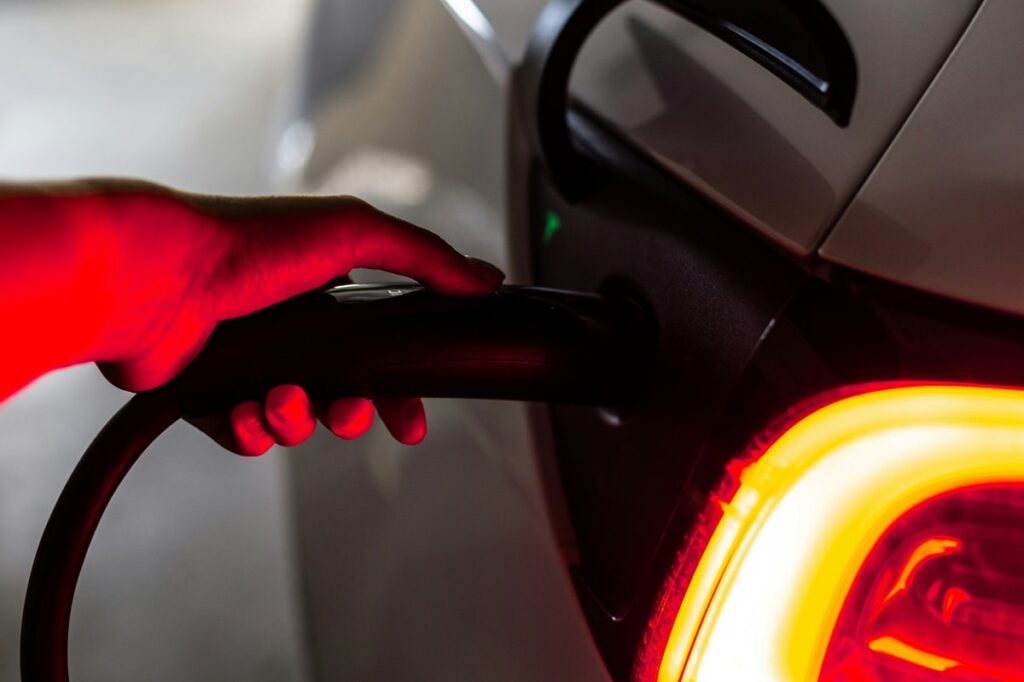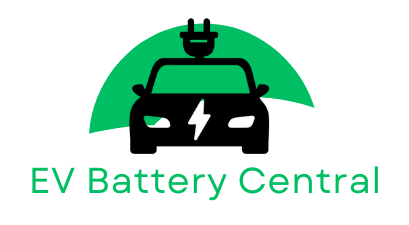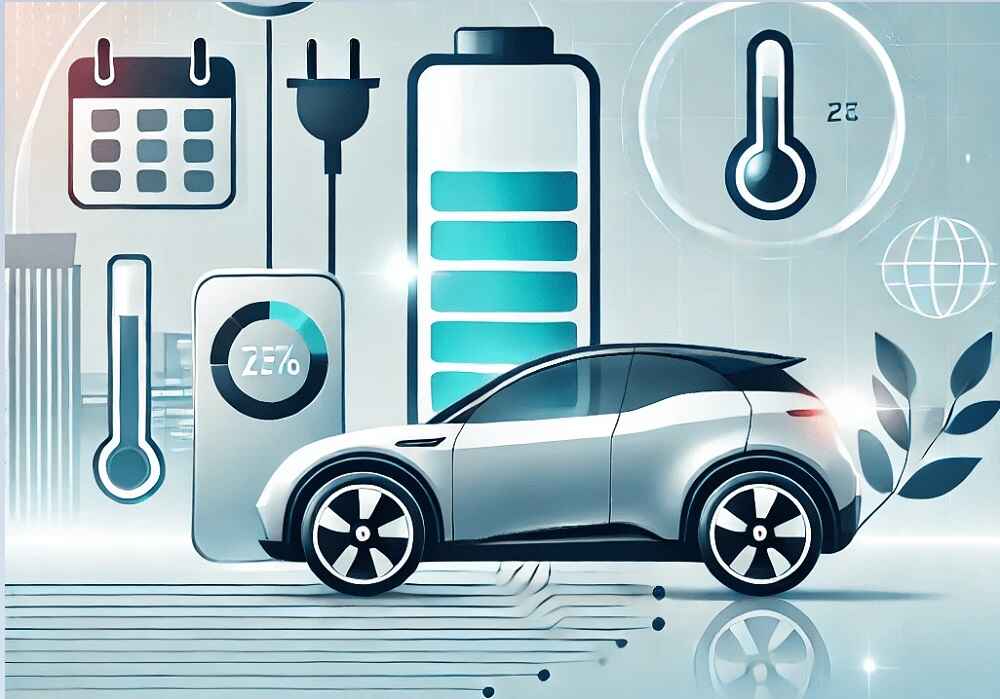If you own an electric car in India, whether it’s a Tata Nexon EV, Punch EV, Tiago EV, MG Comet EV, Mahindra XUV400 EV or other. Many EV car owners share the concern that their EV batteries are depleting, and they frequently need to tether the charger before every drive. Following EV battery charging best practices can help you handle these concerns by ensuring longer battery life. In fact, a survey reveals that 76% of prospective electric vehicle owners worry about range, nearly 59% of current EV drivers report no such concerns, indicating that feelings of range anxiety significantly decrease with ownership experience as drivers become more familiar with their vehicles.
Table of Contents
ToggleWatch This: Addressing Common Problems with Electric Car Batteries
In this concise video, we explore the most common problems with electric car batteries and how to identify and prevent them. This video is a must-watch for EV owners looking to maintain their vehicle’s efficiency and longevity.
Now that you have watched the video, why not dive deeper? do check out our detailed blog post below for essential best practices that an EV owner should know and follow.
As the battery degraded, they couldn’t plan the long drives. Well, it could happen to anyone if you don’t maintain your car properly. As a result, they need to replace the battery pack, which takes a significant burden. To avoid such problematic scenarios, you should follow the best practices for EV battery charging mentioned in this blog.
9 Best Practices for EV Battery Longevity

Ideally, the batteries can last 8-10 years or 1,60,000 km and replacement or maintenance will cost around ₹3 to ₹5 lakhs for entry-level to mid-range EVs and more for higher end EVs. To maintain the longevity, range, and performance of EV cars, you need to pay attention to battery health. An unhealthy battery diminishes the driving experience and decreases the resale value.
By adopting some practices, you can prolong the battery and secure your frequent maintenance expenses. The blog provides the best EV battery charging tips and practices for optimizing the EV car battery.
Stick to Moderate Charging Rule
Not all batteries need to reach 100%. If you want a battery to last longer and more efficiently, avoid charging it fully. Not letting the battery degrade to 20% directly impacts its energy-holding capacity. Most EVs and batteries are made of Lithium-ion batteries, which transfer energy through chemical reactions.
Prioritize Level 1 or Level 2 Battery Charging Levels
The level 3 battery outlet offers fast charging, which is perfect for scenarios when you plan a long, quick trip and need your EV ready instantly. However, battery scientists and numerous laboratory tests recommend that level 1 or level 2 battery charging is safe, secure, and has better thermal and voltage protection. These batteries don’t produce heat. Another advantage of level 1 or level 2 charging systems is that they are comfortable and convenient for home setups. However, it takes 6-12 hours to charge the EVs. for better results. Follow the user manuals for EV charging battery practices provided by manufacturers and dealers.
Charging Level Speed Best Use Case Level 1 Slow Home charging overnight Level 2 Moderate Daily charging at home or work Level 3 Fast Long trips or emergencies For a comparison of different battery technologies, check out our post on Lithium-Ion vs. Solid-State Batteries.
Never Forget the Preconditioning of the Battery
Extreme heat and chill are both hazardous to EV battery range. So, choose the parking lot carefully. Also, if you often like to do DC fast charging, that puts extra stress on battery packs. However, new EVs come with better battery management systems and remote charging features. That adjusts the temperature to the ideal point for fast charging. However, if you have an older EVs, then let the battery precondition for 20 minutes approx and then plug it into charging outlets. It’s one of the most advised best EV battery charging practices. Learn more about how weather impacts battery performance in our guide on EV battery life in cold weather.
Aggressive Driving isn’t Good for EV Battery
Try to avoid using the ‘Boost’ function excessively’. Some car owners enjoy rapid acceleration. However, pressing the ‘boost’ button unnecessarily will drain your battery faster. All EV car owners should use the boost when needed. Drive smoothly at a constant speed to extend the battery lifespan and conserve it longer. Following this EV battery best practices can help you ensure longer battery life.
Regenerative Braking is Adaptable. Best EV Battery Practice
EVs have been introduced with a great feature of regenerative braking that utilizes the battery energy optimally and increases the range and power. Generally, when you hit the break of non-EV cars, the energy drops, and extra effort is needed to get back the speed. But in EVs, this energy stays there and regenerates to power up the battery. This feature eliminates the need for frequent maintenance.
Addressing EV Battery Charging Warnings
Over time, the holding capacity of EV car battery packs drops. You should regularly monitor the percentage of the battery’s charge level, and if it shows any odds, pay attention and connect to your car dealer. If the battery is draining faster, it requires an inspection and service.
Timely Software Updates
Just like CNG and petrol-diesel vehicles, EVs don’t require cylinder replacements, oil changes or greasing maintenance. However, to keep them efficient and performant, keep an eye on OTA software system updates.
Follow the Schedule Maintenance
As I mentioned earlier, charging the battery to 100% will add extra weight to the EV battery. Similarly, too much rolling can flatten the tire. Schedule regular maintenance and service drives to inspect and resolve common potential problems.
Use Components and Features Sparingly
Some people turn off all the rich, luxurious features, headlights, and sound systems to create a buzz and show off. They forget that it also consumes battery power. Imagine that if you don’t find the EV charging station in the nearby location range, how will you complete the journey?
EVs don’t consume fuel, but they do consume electricity. Still, EV stations are not easy to locate in some places. So please use the features and luxuries reasonably to meet your needs.
Key Takeaways:
- Moderate Charging modes
- Preconditioning is necessary
- Aggressive Driving is prohibited
- Regenerative Braking
- Turn Off Unnecessary Features
- Schedule Software Updates and Regular Maintenance
We hope you remember these nuggets of the EV battery charging best practices and be a proud EV car owner.
Bottom Line:
Whether for short or long drives, EVs are comfortable and budget-friendly transportation that is also good for the environment. Also, you don’t need to take the extra baggage for maintenance. The only concern is its battery pack. Be a responsible EV car owner and follow the best EV battery charging practices to avoid regular service on wear and tear.
What are your best practices for charging your EV? Share your tips in the comments below and help other EV owners maximize their battery life!
FAQs
Yes, aggressive driving habits definitely impact battery health, such as encountering wear and tear events or faster draining. However, new EVs come with regenerative braking that will conserve the battery power for longer.
It’s as simple as we follow for our smartphone, which is 20% to 80%. Don’t let the batteries be depleted. Deep discharging or overcharging to 100% will impact the range and performance of electric vehicles.
Outside temperatures temperate your EVs significantly, and it will raise complaints. Choose the parking lot carefully, as too much cold or heat will degrade the battery range up to 40%.

EV Battery Central is your trusted source for EV battery insights. We provide expert guidance on battery maintenance, recycling, replacement costs, and innovations in electric vehicle technology. Our mission is to empower EV owners with actionable information to make informed decisions.

